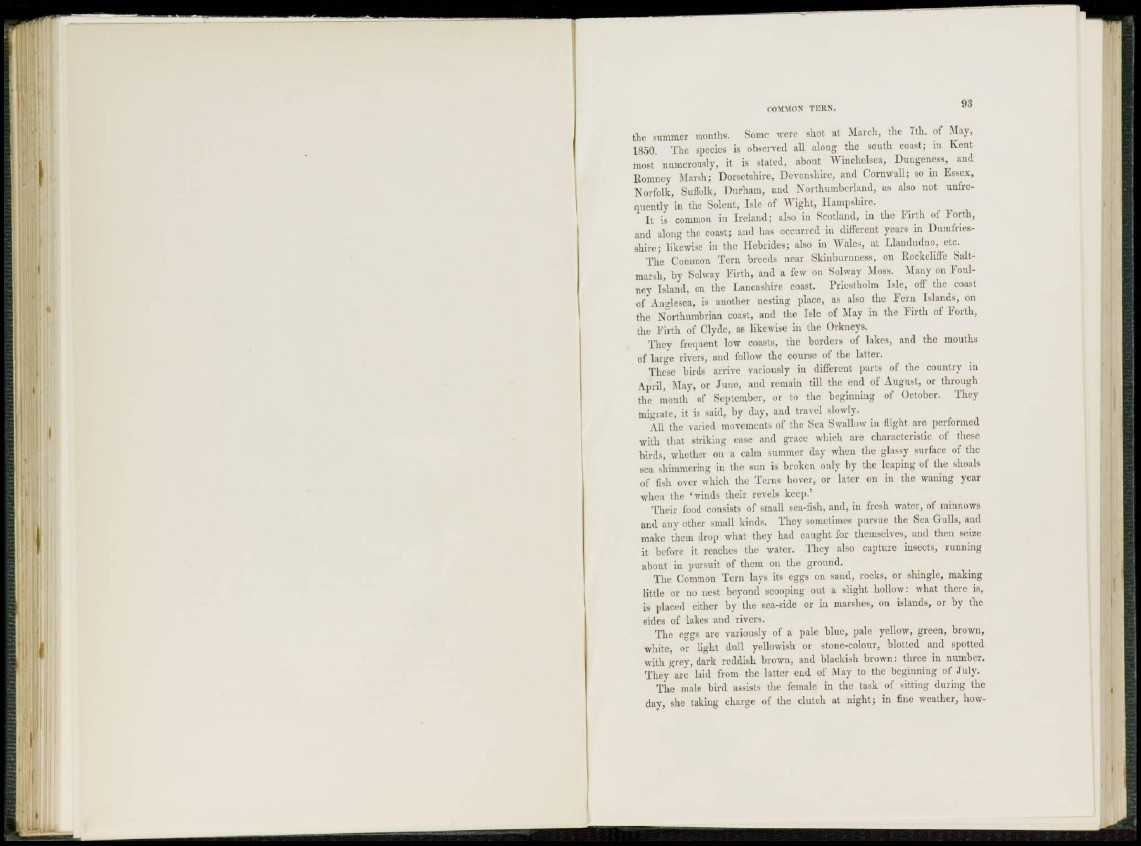
the summer months. Some were shot at March, the 7th. of May,
1850. The species is observed all along the south coast; in Kent
most numerously, it is stated, about Winchelsea, Dungeness, and
Romney Marsh; Dorsetshire, Devonshire, and Cornwall; so hi Essex,
Norfolk, Suffolk, Durham, and Northumberland, as also not unfrequently
in the Solent, Isle of Wight, Hampshire.
I t is common in Ireland; also in Scotland, in the Firth of Forth,
and along the coast; and has occurred in different years in Dumfriesshire;
likewise in the Hebrides; also in Wales, at Llandudno, etc.
The Common Tern breeds near Skinburnness, on Rockcliffe Saltmarsh,
by Solway Firth, and a few on Solway Moss. Many on Foul*
ney Island, on the Lancashire coast. Priestholm Isle, off the coast
of Anglesea, is another nesting place, as also the Fern Islands, on
the Northumbrian coast, and the Isle of May in the Firth of Forth,
the Firth of Clyde, as likewise in the Orkneys.
They frequent low coasts, the borders of lakes, and the mouths
of large rivers, and follow the course of the latter.
These birds arrive variously in different parts of the country in
April, May, or June, and remain till the end of August, or through
the month of September, or to the beginning of October. They
migrate, it is said, by day, and travel slowly.
All the varied movements of the Sea Swallow in flight are performed
with that striking ease and grace which are characteristic of these
birds, whether on a calm summer day when the glassy surface of the
sea shimmering in the sun is broken only by the leaping of the shoals
of fish over which the Terns hover, or later on in the waning year
when the 'winds their revels keep.'
Their food consists of small sea-fish, and, in fresh water, of minnows
and any other small kinds. They sometimes pursue the Sea Gulls, and
make them drop what they had caught for themselves, and then seize
it before it reaches tin; water. They also capture insects, running
about in pursuit of them on the ground.
The Common Tern lays its eggs on sand, rocks, or shingle, making
little or no nest beyond scooping out a slight hollow: what there is,
is placed either by the sea-side or in marshes, on islands, or by the
sides of lakes and rivers.
The eggs are variously of a pale blue, pale yellow, green, brown,
white, or light dull yellowish or stone-colour, blotted and spotted
with grey, dark reddish brown, and blackish brown: three in number.
They are laid from the latter end of May to the beginning of July.
The male bird assists the female in the task of sitting during the
day, she taking charge of the clutch at night; in fine weather, how